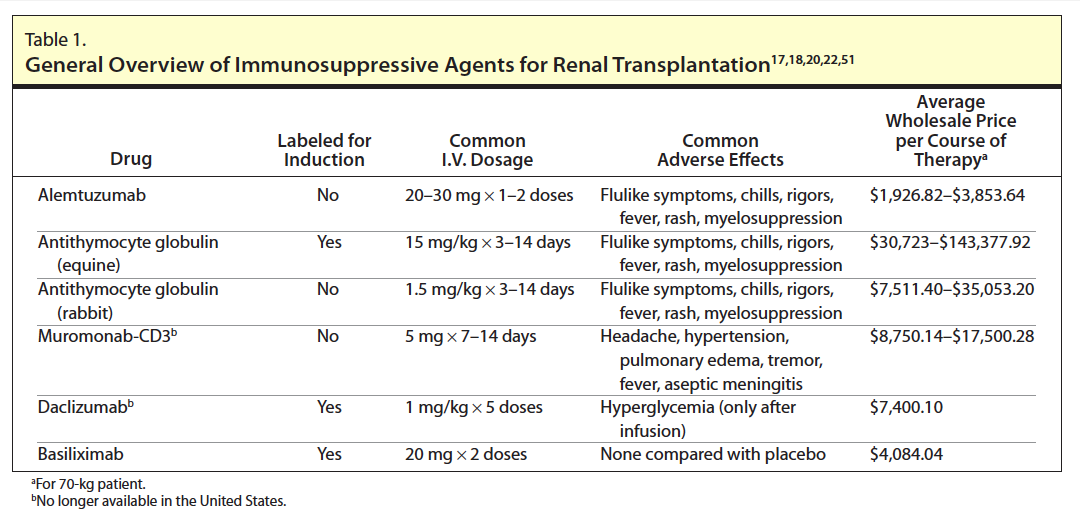Purpose Induction immunosuppressive therapies for patients undergoing renal transplantation are reviewed. Summary The goal of induction therapy is to prevent acute rejection during the early posttransplantation period by providing a high degree of immunosuppression at the time of transplantation. Induction therapy is often considered essential to optimize outcomes, particularly in patients at high risk for poor short-term outcomes. All of the induction immunosuppressive agents currently used are biological agents and are either monoclonal (muromonab-CD3, daclizumab, basiliximab, alemtuzumab) or polyclonal (antithymocyte globulin [equine] or antithymocyte globulin [rabbit]) antibodies. Although antithymocyte globulin (rabbit) is not labeled for induction therapy, it is used for this purpose more than any other agent. Basiliximab is not considered as potent an immunosuppressive agent but has a much more favorable adverse-effect profile compared with antithymocyte globulin (rabbit) and is most commonly used in patients at low risk for acute rejection. Rituximab is being studied for use as induction therapy but to date has not demonstrated any significant benefits over placebo. While head-to-head data are available comparing most induction agents, the final decision on the most appropriate induction therapy for a transplant recipient is highly dependent on preexisting medical conditions, donor characteristics, and the maintenance immunosuppressive regimen to be used. Conclusion No standard induction immunosuppressive regimen exists for patients undergoing renal transplantation. Antithymocyte globulin (rabbit) is the most commonly used agent, whereas basiliximab appears safer. The choice of regimen depends on the preferences of clinicians and institutions.






 留言列表
留言列表
 線上藥物查詢
線上藥物查詢 